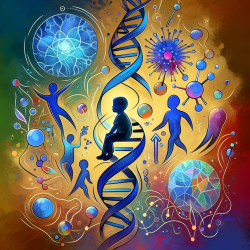Introduction
Schizophrenia is a complex psychiatric disorder affecting millions globally. Its heterogeneity in symptoms and progression poses challenges for effective treatment. A recent study titled "Neurostructural subgroup in 4291 individuals with schizophrenia identified using the subtype and stage inference algorithm" offers promising insights into categorizing schizophrenia into distinct neurostructural subgroups. This categorization can potentially lead to more targeted and effective therapeutic interventions.
The Power of Machine Learning in Psychiatry
The study leverages the Subtype and Stage Inference (SuStaIn) algorithm, a machine learning approach, to analyze brain imaging data from over 4,000 individuals with schizophrenia. The algorithm identified two distinct neurostructural subgroups, each with unique patterns of gray matter loss and disease progression. This classification is not only reproducible across various populations but also offers a new lens through which we can understand the biological underpinnings of schizophrenia.
Implications for Practitioners
For practitioners, understanding these subgroups can be transformative. By recognizing the specific neurostructural changes associated with each subgroup, therapy can be more personalized. Here’s how practitioners can enhance their therapeutic strategies:
- Targeted Interventions: Tailor interventions based on the subgroup's specific neuroanatomical and symptomatic profiles. For instance, subgroup 1, characterized by early cortical-predominant loss, might benefit from therapies focusing on cognitive rehabilitation.
- Early Identification: Use imaging techniques to identify which subgroup a patient belongs to, potentially allowing for earlier and more precise intervention.
- Data-Driven Decisions: Incorporate machine learning insights into clinical practice, ensuring decisions are backed by robust data.
Encouraging Further Research
While the study provides a solid foundation, further research is essential to refine these subgroups and explore their implications in clinical settings. Practitioners are encouraged to collaborate with researchers to validate these findings in diverse populations and investigate the potential for similar approaches in other psychiatric disorders.
Conclusion
The identification of neurostructural subgroups in schizophrenia marks a significant advancement in psychiatric research. For practitioners, it opens new avenues for personalized therapy, promising better outcomes for patients. By integrating these insights into practice and supporting ongoing research, we can move closer to a future where mental health care is as precise and effective as possible.
To read the original research paper, please follow this link: Neurostructural subgroup in 4291 individuals with schizophrenia identified using the subtype and stage inference algorithm.










